- Home
- Jules Verne
Vingt mille lieues sous les mers. English
Vingt mille lieues sous les mers. English Read online
FIRST PART
1. A Runaway Reef 1
2. The Pros and Cons 6
3. As Master Wishes 10
4. Ned Land 14
5. At Random! 19
6. At Full Steam 24
7. A Whale of Unknown Species 30
8. "Mobilis in Mobili" 35
9. The Tantrums of Ned Land 41
10. The Man of the Waters 46
11. The Nautilus 53
12. Everything through Electricity 58
13. Some Figures 63
14. The Black Current 68
15. An Invitation in Writing 76
16. Strolling the Plains 82
17. An Underwater Forest 86
18. Four Thousand Leagues Under the Pacific 91
19. Vanikoro 96
20. The Torres Strait 103
21. Some Days Ashore 109
22. The Lightning Bolts of Captain Nemo 117
23. "Aegri Somnia" 126
24. The Coral Realm 132
SECOND PART
1. The Indian Ocean 138
2. A New Proposition from Captain Nemo 145
3. A Pearl Worth Ten Million 152
4. The Red Sea 160
5. Arabian Tunnel 170
6. The Greek Islands 176
7. The Mediterranean in Forty-Eight Hours 184
8. The Bay of Vigo 191
9. A Lost Continent 199
10. The Underwater Coalfields 206
11. The Sargasso Sea 214
12. Sperm Whales and Baleen Whales 220
13. The Ice Bank 228
14. The South Pole 236
15. Accident or Incident? 246
16. Shortage of Air 252
17. From Cape Horn to the Amazon 259
18. The Devilfish 266
19. The Gulf Stream 274
20. In Latitude 47? 24' and Longitude 17? 28' 282
21. A Mass Execution 287
22. The Last Words of Captain Nemo 294
23. Conclusion 299
Color Plates
Facing Page
The Bay of Vigo. iii
Ned Land stayed at his post. 28
"I've collected every one of them." 56
We walked with steady steps. 84
The dugout canoes drew nearer. 122
A dreadful battle was joined. 158
Picturesque ruins took shape. 202
"Farewell, O sun!" he called. 244
The poor fellow was done for. 272
An engaving by Guillaumot.
Introduction
"The deepest parts of the ocean are totally unknown to us,"admits Professor Aronnax early in this novel. "What goes on inthose distant depths? What creatures inhabit, or could inhabit,those regions twelve or fifteen miles beneath the surface of the water?It's almost beyond conjecture."
Jules Verne (1828-1905) published the French equivalents of these wordsin 1869, and little has changed since. 126 years later, a Timecover story on deep-sea exploration made much the same admission:"We know more about Mars than we know about the oceans."This reality begins to explain the dark power and otherworldlyfascination of Twenty Thousand Leagues Under the Seas.
Born in the French river town of Nantes, Verne had a lifelongpassion for the sea. First as a Paris stockbroker, later as acelebrated author and yachtsman, he went on frequent voyages--to Britain, America, the Mediterranean. But the specific stimulusfor this novel was an 1865 fan letter from a fellow writer,Madame George Sand. She praised Verne's two early novels Five Weeksin a Balloon (1863) and Journey to the Center of the Earth(1864), then added: "Soon I hope you'll take us into the ocean depths,your characters traveling in diving equipment perfected by yourscience and your imagination." Thus inspired, Verne created oneof literature's great rebels, a freedom fighter who plunged beneaththe waves to wage a unique form of guerilla warfare.
Initially, Verne's narrative was influenced by the 1863 uprising ofPoland against Tsarist Russia. The Poles were quashed with a violencethat appalled not only Verne but all Europe. As originally conceived,Verne's Captain Nemo was a Polish nobleman whose entire familyhad been slaughtered by Russian troops. Nemo builds a fabulousfuturistic submarine, the Nautilus, then conducts an underwatercampaign of vengeance against his imperialist oppressor.
But in the 1860s France had to treat the Tsar as an ally,and Verne's publisher Pierre Hetzel pronounced the book unprintable.Verne reworked its political content, devising new nationalities forNemo and his great enemy--information revealed only in a later novel,The Mysterious Island (1875); in the present work Nemo's backgroundremains a dark secret. In all, the novel had a difficult gestation.Verne and Hetzel were in constant conflict and the book wentthrough multiple drafts, struggles reflected in its severalworking titles over the period 1865-69: early on, it was variouslycalled Voyage Under the Waters, Twenty-five Thousand Leagues Underthe Waters, Twenty Thousand Leagues Under the Waters,and A Thousand Leagues Under the Oceans.
Verne is often dubbed, in Isaac Asimov's phrase, "the world'sfirst science-fiction writer." And it's true, many of hissixty-odd books do anticipate future events and technologies:From the Earth to the Moon (1865) and Hector Servadac (1877) dealin space travel, while Journey to the Center
of the Earth features travel to the earth's core. But with Vernethe operative word is "travel," and some of his best-known titlesdon't really qualify as sci-fi: Around the World in Eighty Days(1872) and Michael Strogoff (1876) are closer to "travelogs"--adventure yarns in far-away places.
These observations partly apply here. The subtitle of the presentbook is An Underwater Tour of the World, so in good travelog style,the Nautilus's exploits supply an episodic story line.Shark attacks, giant squid, cannibals, hurricanes, whale hunts,and other rip-roaring adventures erupt almost at random. Yet this loosestructure gives the novel an air of documentary realism. What's more,Verne adds backbone to the action by developing three recurring motifs:the deepening mystery of Nemo's past life and future intentions,the mounting tension between Nemo and hot-tempered harpooner Ned Land,and Ned's ongoing schemes to escape from the Nautilus. These unifyingthreads tighten the narrative and accelerate its momentum.
Other subtleties occur inside each episode, the textures sparklingwith wit, information, and insight. Verne regards the sea frommany angles: in the domain of marine biology, he gives us thumbnailsketches of fish, seashells, coral, sometimes in great catalogsthat swirl past like musical cascades; in the realm of geology,he studies volcanoes literally inside and out; in the world of commerce,he celebrates the high-energy entrepreneurs who lay the Atlantic Cableor dig the Suez Canal. And Verne's marine engineering provesespecially authoritative. His specifications for an open-sea submarineand a self-contained diving suit were decades before their time,yet modern technology bears them out triumphantly.
True, today's scientists know a few things he didn't: the South Poleisn't at the water's edge but far inland; sharks don't flipover before attacking; giant squid sport ten tentacles not eight;sperm whales don't prey on their whalebone cousins. This notwithstanding,Verne furnishes the most evocative portrayal of the ocean depthsbefore the arrival of Jacques Cousteau and technicolor film.
Lastly the book has stature as a novel of character. Even thesupporting cast is shrewdly drawn: Professor Aronnax, the careerscientist caught in an ethical conflict; Conseil, the compulsiveclassifier who supplies humorous tag lines for Verne's fast facts;the harpooner Ned Land, a creature of constant appetites,man as heroic animal.
But much of the novel's brooding power comes from Captain Nemo.Inventor, musician, Renaissance genius, he's a trail-blazing creation,the prototype not only for countless renegade scientists inpopular fiction, but even for such varied figures as Sherlock Holmesor Wolf Larsen. However, Verne gives his hero's brillianceand benevolence a dark underside--the man's obsessive hate for hisold enemy. This compulsion leads Nemo into ugly contradictions:he's a fighter for freedom, yet all who board his ship are imprisonedthere for good; he works to save lives, both human and animal,yet he himself creates a holocaust; he detests imperialism,yet he lays personal claim to the South Pole. And in this last actionhe falls into the classic sin of Pride. He's swiftly punished.The Nautilus nearly perishes in the Antarctic and Nemo sinks intoa growing depression.
Like Shakespeare's King Lear he courts death and madness in a great storm,then commits mass murder, collapses in catatonic paralysis,and suicidally runs his ship into the ocean's most dangerous whirlpool.Hate swallows him whole.
For many, then, this book has been a source of fascination,surely one of the most influential novels ever written, an inspirationfor such scientists and discoverers as engineer Simon Lake,oceanographer William Beebe, polar traveler Sir Ernest Shackleton.Likewise Dr. Robert D. Ballard, finder of the sunken Titanic,confesses that this was his favorite book as a teenager,and Cousteau himself, most renowned of marine explorers, called ithis shipboard bible.
The present translation is a faithful yet communicative renderingof the original French texts published in Paris by J. Hetzel et Cie.--the hardcover first edition issued in the autumn of 1871,collated with the softcover editions of the First and Second Partsissued separately in the autumn of 1869 and the summer of 1870.Although prior English versions have often been heavily abridged,this new translation is complete to the smallest substantive detail.
Because, as that Time cover story suggests, we still hav
en't caughtup with Verne. Even in our era of satellite dishes and video games,the seas keep their secrets. We've seen progress in sonar, torpedoes,and other belligerent machinery, but sailors and scientists--to say nothing of tourists--have yet to voyage in a submarinewith the luxury and efficiency of the Nautilus.
F. P. WALTER
University of Houston
Units of Measure
CABLE LENGTH In Verne's context, 600 feet
CENTIGRADE 0 degrees centigrade = freezing water
37 degrees centigrade = human body temperature
100 degrees centigrade = boiling water
FATHOM 6 feet
GRAM Roughly 1/28 of an ounce
- MILLIGRAM Roughly 1/28,000 of an ounce
- KILOGRAM (KILO) Roughly 2.2 pounds
HECTARE Roughly 2.5 acres
KNOT 1.15 miles per hour
LEAGUE In Verne's context, 2.16 miles
LITER Roughly 1 quart
METER Roughly 1 yard, 3 inches
- MILLIMETER Roughly 1/25 of an inch
- CENTIMETER Roughly 2/5 of an inch
- DECIMETER Roughly 4 inches
- KILOMETER Roughly 6/10 of a mile
- MYRIAMETER Roughly 6.2 miles
TON, METRIC Roughly 2,200 pounds viii
FIRST PART
___________________________________________________________________
CHAPTER 1
A Runaway Reef
THE YEAR 1866 was marked by a bizarre development, an unexplainedand downright inexplicable phenomenon that surely no one has forgotten.Without getting into those rumors that upset civiliansin the seaports and deranged the public mind even far inland,it must be said that professional seamen were especially alarmed.Traders, shipowners, captains of vessels, skippers, and master marinersfrom Europe and America, naval officers from every country, and attheir heels the various national governments on these two continents,were all extremely disturbed by the business.
In essence, over a period of time several ships had encountered"an enormous thing" at sea, a long spindle-shaped object,sometimes giving off a phosphorescent glow, infinitely biggerand faster than any whale.
The relevant data on this apparition, as recorded in various logbooks,agreed pretty closely as to the structure of the object or creaturein question, its unprecedented speed of movement, its startlinglocomotive power, and the unique vitality with which it seemedto be gifted. If it was a cetacean, it exceeded in bulk any whalepreviously classified by science. No naturalist, neither Cuvier norLac?p?de, neither Professor Dumeril nor Professor de Quatrefages,would have accepted the existence of such a monster sight unseen--specifically, unseen by their own scientific eyes.
Striking an average of observations taken at different times--rejecting those timid estimates that gave the object a lengthof 200 feet, and ignoring those exaggerated views that saw itas a mile wide and three long--you could still assert that thisphenomenal creature greatly exceeded the dimensions of anythingthen known to ichthyologists, if it existed at all.
Now then, it did exist, this was an undeniable fact; and sincethe human mind dotes on objects of wonder, you can understandthe worldwide excitement caused by this unearthly apparition.As for relegating it to the realm of fiction, that charge hadto be dropped.
In essence, on July 20, 1866, the steamer Governor Higginson,from the Calcutta & Burnach Steam Navigation Co., encountered thismoving mass five miles off the eastern shores of Australia.
Captain Baker at first thought he was in the presence of an unknown reef;he was even about to fix its exact position when two waterspoutsshot out of this inexplicable object and sprang hissing into the airsome 150 feet. So, unless this reef was subject to the intermittenteruptions of a geyser, the Governor Higginson had fair and honestdealings with some aquatic mammal, until then unknown, that couldspurt from its blowholes waterspouts mixed with air and steam.
Similar events were likewise observed in Pacific seas, on July 23of the same year, by the Christopher Columbus from the West India& Pacific Steam Navigation Co. Consequently, this extraordinarycetacean could transfer itself from one locality to another withstartling swiftness, since within an interval of just three days,the Governor Higginson and the Christopher Columbus had observedit at two positions on the charts separated by a distance of morethan 700 nautical leagues.
Fifteen days later and 2,000 leagues farther, the Helvetia fromthe Compagnie Nationale and the Shannon from the Royal Mail line,running on opposite tacks in that part of the Atlantic lyingbetween the United States and Europe, respectively signaled eachother that the monster had been sighted in latitude 42 degrees 15'north and longitude 60 degrees 35' west of the meridianof Greenwich. From their simultaneous observations, they were ableto estimate the mammal's minimum length at more than 350 Englishfeet;* this was because both the Shannon and the Helvetia were ofsmaller dimensions, although each measured 100 meters stem to stern.Now then, the biggest whales, those rorqual whales that frequentthe waterways of the Aleutian Islands, have never exceeded a lengthof 56 meters--if they reach even that.
*Author's Note: About 106 meters. An English foot isonly 30.4 centimeters.
One after another, reports arrived that would profoundly affectpublic opinion: new observations taken by the transatlanticliner Pereire, the Inman line's Etna running afoul of the monster,an official report drawn up by officers on the French frigate Normandy,dead-earnest reckonings obtained by the general staff ofCommodore Fitz-James aboard the Lord Clyde. In lighthearted countries,people joked about this phenomenon, but such serious, practical countriesas England, America, and Germany were deeply concerned.
In every big city the monster was the latest rage; they sangabout it in the coffee houses, they ridiculed it in the newspapers,they dramatized it in the theaters. The tabloids found it a fineopportunity for hatching all sorts of hoaxes. In those newspapersshort of copy, you saw the reappearance of every giganticimaginary creature, from "Moby Dick," that dreadful white whale fromthe High Arctic regions, to the stupendous kraken whose tentaclescould entwine a 500-ton craft and drag it into the ocean depths.They even reprinted reports from ancient times: the viewsof Aristotle and Pliny accepting the existence of such monsters,then the Norwegian stories of Bishop Pontoppidan, the narrativesof Paul Egede, and finally the reports of Captain Harrington--whose good faith is above suspicion--in which he claims he saw,while aboard the Castilian in 1857, one of those enormousserpents that, until then, had frequented only the seas of France'sold extremist newspaper, The Constitutionalist.
An interminable debate then broke out between believers andskeptics in the scholarly societies and scientific journals.The "monster question" inflamed all minds. During thismemorable campaign, journalists making a profession of sciencebattled with those making a profession of wit, spilling waves of inkand some of them even two or three drops of blood, since they wentfrom sea serpents to the most offensive personal remarks.
For six months the war seesawed. With inexhaustible zest,the popular press took potshots at feature articles fromthe Geographic Institute of Brazil, the Royal Academy of Sciencein Berlin, the British Association, the Smithsonian Institutionin Washington, D.C., at discussions in The Indian Archipelago,in Cosmos published by Father Moigno, in Petermann's Mittheilungen,*and at scientific chronicles in the great French and foreign newspapers.When the monster's detractors cited a saying by the botanist Linnaeusthat "nature doesn't make leaps," witty writers in the popularperiodicals parodied it, maintaining in essence that "nature doesn'tmake lunatics," and ordering their contemporaries never to givethe lie to nature by believing in krakens, sea serpents, "Moby Dicks,"and other all-out efforts from drunken seamen. Finally, in a much-fearedsatirical journal, an article by its most popular columnist finishedoff the monster for good, spurning it in the style of Hippolytusrepulsing the amorous advances of his stepmother Phaedra, and givingthe creature its quietus amid a universal burst of laughter.Wit had defeated science.

 Michael Strogoff; Or the Courier of the Czar: A Literary Classic
Michael Strogoff; Or the Courier of the Czar: A Literary Classic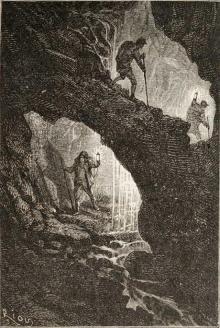 Voyage au centre de la terre. English
Voyage au centre de la terre. English Journey Through the Impossible
Journey Through the Impossible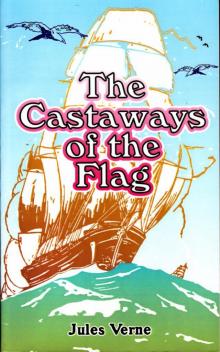 The Castaways of the Flag
The Castaways of the Flag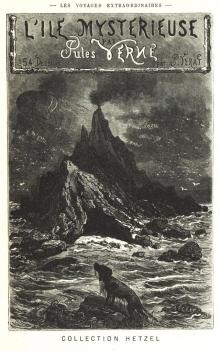 L'île mystérieuse. English
L'île mystérieuse. English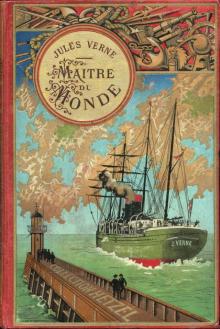 Maître du monde. English
Maître du monde. English Around the World in Eighty Days
Around the World in Eighty Days A Voyage in a Balloon
A Voyage in a Balloon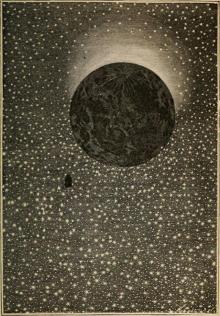 From the Earth to the Moon, Direct in Ninety-Seven Hours and Twenty Minutes: and a Trip Round It
From the Earth to the Moon, Direct in Ninety-Seven Hours and Twenty Minutes: and a Trip Round It Paris in the Twentieth Century
Paris in the Twentieth Century City in the Sahara - Barsac Mission 02
City in the Sahara - Barsac Mission 02 The English at the North Pole
The English at the North Pole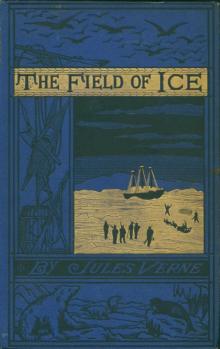 The Field of Ice
The Field of Ice From the Earth to the Moon
From the Earth to the Moon Un capitaine de quinze ans. English
Un capitaine de quinze ans. English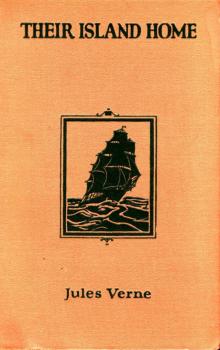 The Mysterious Island
The Mysterious Island Les indes-noirs. English
Les indes-noirs. English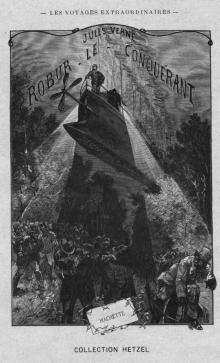 Robur-le-conquerant. English
Robur-le-conquerant. English Propeller Island
Propeller Island Around the World in Eighty Days. Junior Deluxe Edition
Around the World in Eighty Days. Junior Deluxe Edition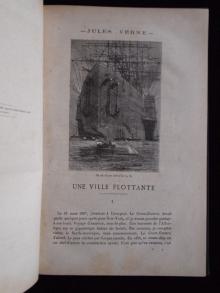 Les forceurs de blocus. English
Les forceurs de blocus. English In the Year 2889
In the Year 2889 Journey to the Centre of the Earth
Journey to the Centre of the Earth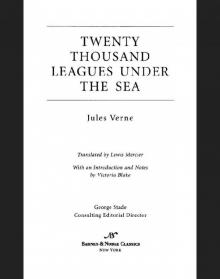 Twenty Thousand Leagues Under the Sea
Twenty Thousand Leagues Under the Sea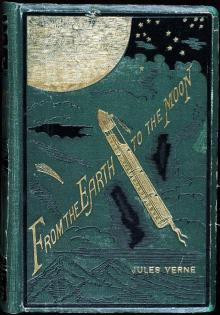 From the Earth to the Moon; and, Round the Moon
From the Earth to the Moon; and, Round the Moon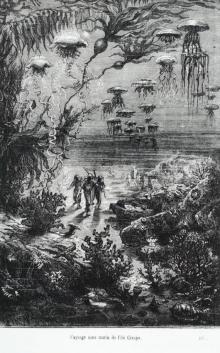 Vingt mille lieues sous les mers. English
Vingt mille lieues sous les mers. English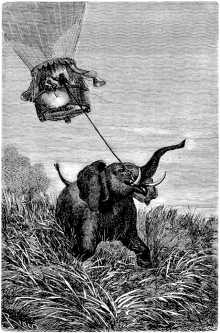 Cinq semaines en ballon. English
Cinq semaines en ballon. English Twenty Thousand Leagues under the Seas
Twenty Thousand Leagues under the Seas Face au drapeau. English
Face au drapeau. English Michael Strogoff; Or, The Courier of the Czar
Michael Strogoff; Or, The Courier of the Czar Un billet de loterie. English
Un billet de loterie. English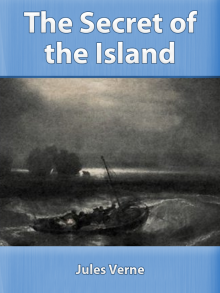 The Secret of the Island
The Secret of the Island Off on a Comet! a Journey through Planetary Space
Off on a Comet! a Journey through Planetary Space Into the Niger Bend: Barsac Mission, Part 1
Into the Niger Bend: Barsac Mission, Part 1 All Around the Moon
All Around the Moon A Journey to the Center of the Earth - Jules Verne: Annotated
A Journey to the Center of the Earth - Jules Verne: Annotated 20000 Lieues sous les mers Part 2
20000 Lieues sous les mers Part 2 Robur-le-Conquerant
Robur-le-Conquerant Les Index Noires
Les Index Noires Michael Strogoff; or the Courier of the Czar
Michael Strogoff; or the Courier of the Czar 20000 Lieues sous les mers Part 1
20000 Lieues sous les mers Part 1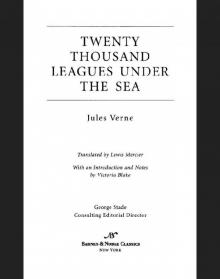 Twenty Thousand Leagues Under the Sea (Barnes & Noble Classics Series)
Twenty Thousand Leagues Under the Sea (Barnes & Noble Classics Series) Five Weeks In A Balloon
Five Weeks In A Balloon Journey to the Center of the Earth
Journey to the Center of the Earth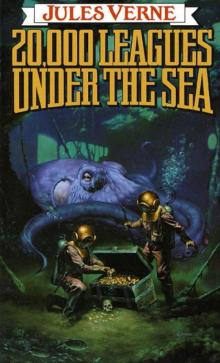 20,000 Leagues Under the Sea
20,000 Leagues Under the Sea Journey to the Center of the Earth (Barnes & Noble Classics Series)
Journey to the Center of the Earth (Barnes & Noble Classics Series) Adrift in the Pacific-Two Years Holiday
Adrift in the Pacific-Two Years Holiday The Collected Works of Jules Verne: 36 Novels and Short Stories (Unexpurgated Edition) (Halcyon Classics)
The Collected Works of Jules Verne: 36 Novels and Short Stories (Unexpurgated Edition) (Halcyon Classics) The Survivors of the Chancellor
The Survivors of the Chancellor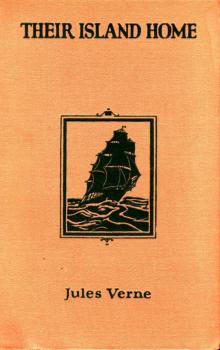 Their Island Home
Their Island Home Le Chateau des Carpathes
Le Chateau des Carpathes Les Cinq Cents Millions de la Begum
Les Cinq Cents Millions de la Begum The Floating Island
The Floating Island Cinq Semaines En Ballon
Cinq Semaines En Ballon Autour de la Lune
Autour de la Lune